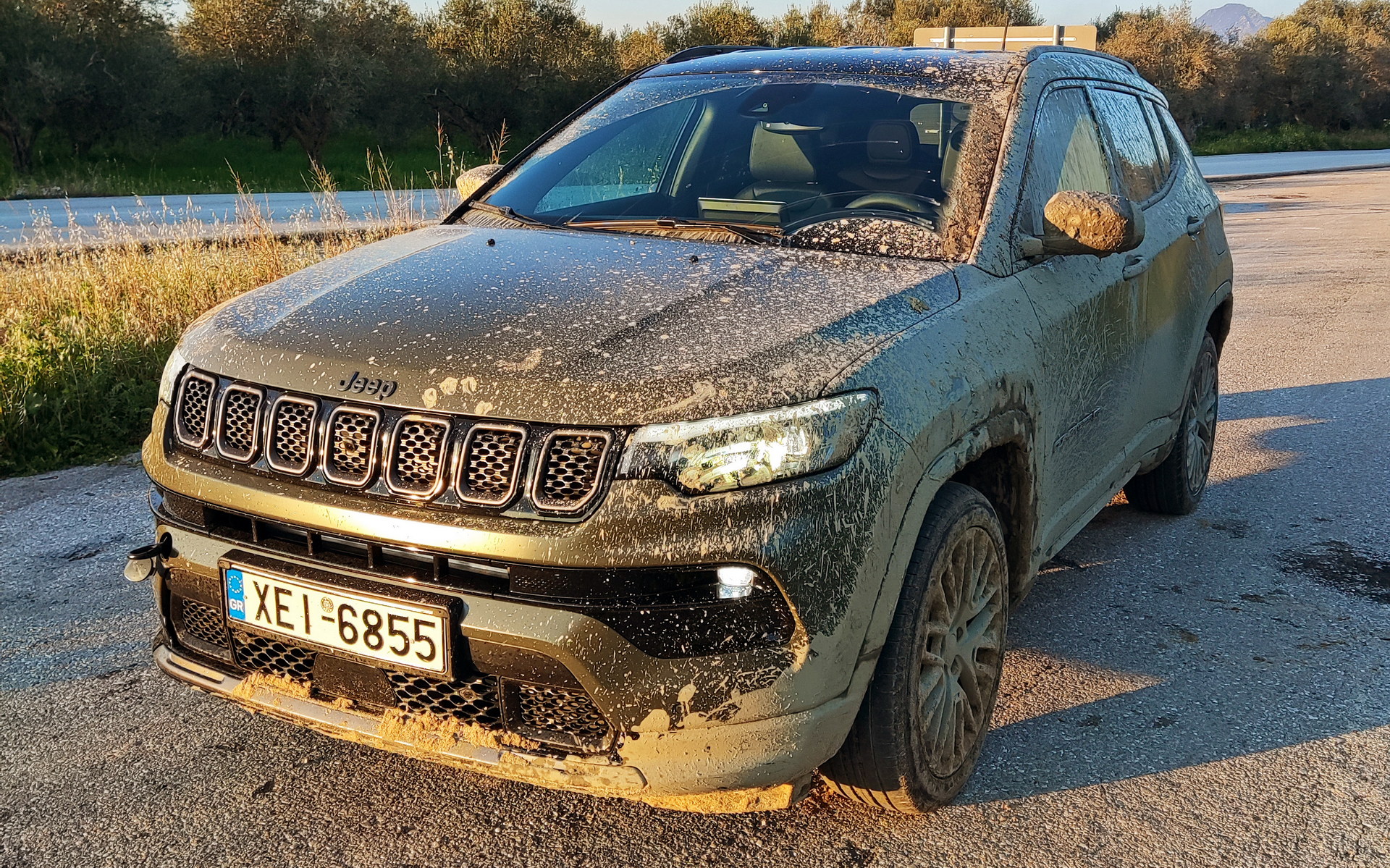Admitting my own mistakes is something I learned to do from an early age since, after the initial embarrassment, it is a great way to learn and avoid future hurdles. In that context, when I surprised myself by getting stuck in the sand with a four-wheel-drive Jeep, I knew I had to share this experience with anyone who could possibly find themselves in a similar position.
Let’s start by admitting the obvious – I am not an off-road expert. However, I have participated in a couple of off-roading expeditions, and done my fair bit of playing around in the sand in various all-wheel-drive vehicles. This background, in combination with the familiarity of whereabouts, gave me a false sense of confidence behind the wheel of the Jeep Compass 4Xe press car during a weekend trip to my favorite beach.
How To Turn A Sunny Sunday Into An Muddy Nightmare
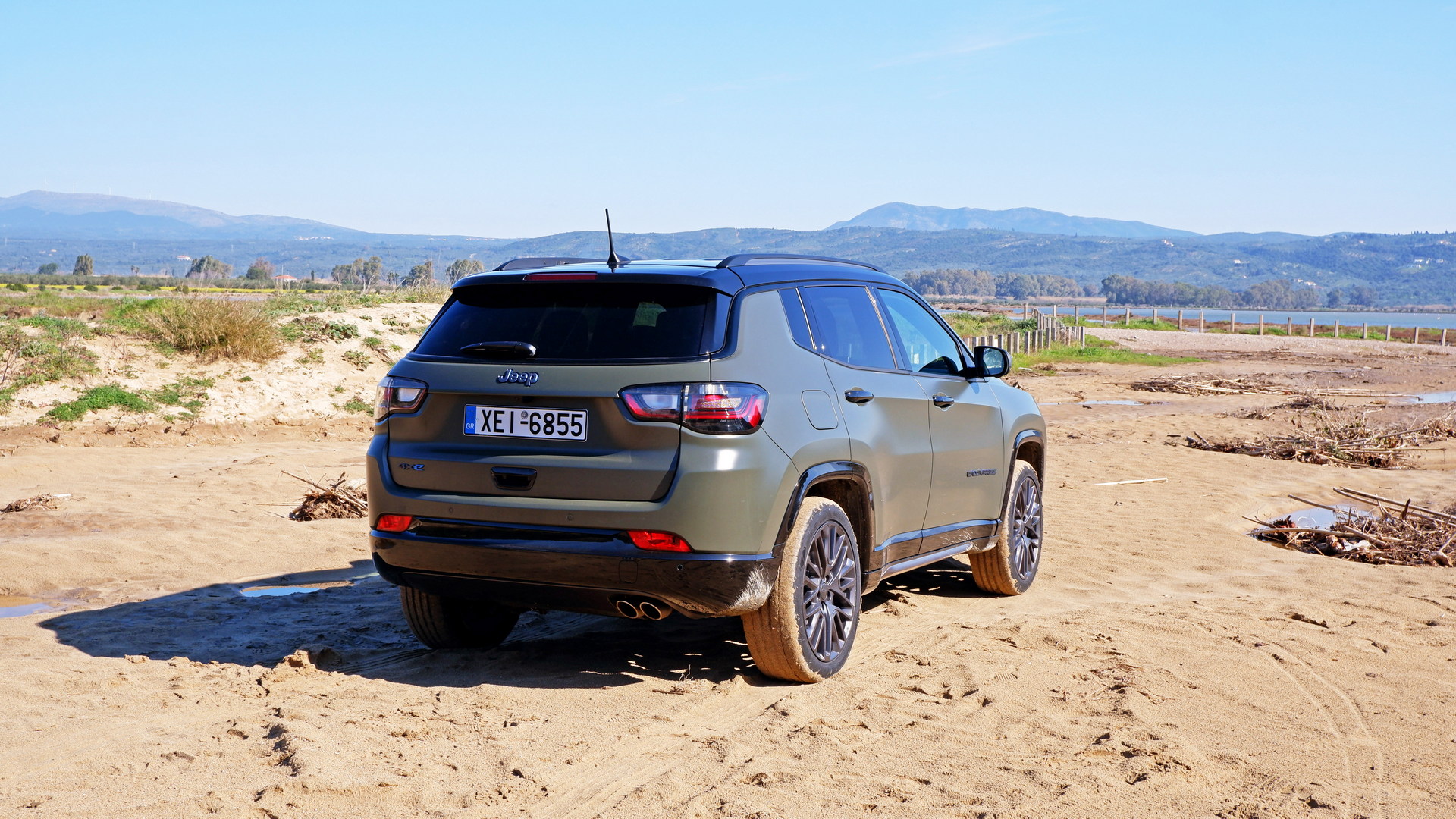
After spending a beautiful morning next to the Mediterranean sea, I wanted to reach a nice spot for SUV photography which was very close to the open space I had parked. I could see a few puddles of water on the gravel road, but I thought they wouldn’t be an issue for my Jeep. After all, it came standard with 4WD low and lock functions, plus the dedicated Sand/Mud profile of the Jeep Selec-Terrain system, although I knew that the tarmac-only 235/45 R19 Goodyear Eagle F1 tires would limit its potential.
Following the basic principle, I applied stable pressure on the gas pedal, letting the electronics do all the work, automatically adjusting the distribution of power between the ICE moving the front wheels and the electric motor at the rear. Everything seemed fine at the beginning, but the next few puddles were deeper than they looked, causing a fair bit of struggle from the 4WD system. Thankfully I reached the spot with a fair bit of mud splashed on my Jeep’s bodywork and greenhouse as proper battle-marks. After I got my cover snapshot for the review I decided to head back from another path in order to avoid the puddle-related anxiety since the tires were now covered with mud.
Read Also: The 2022 Jeep Compass 4Xe PHEV Adds Value To An Already Well-Rounded SUV
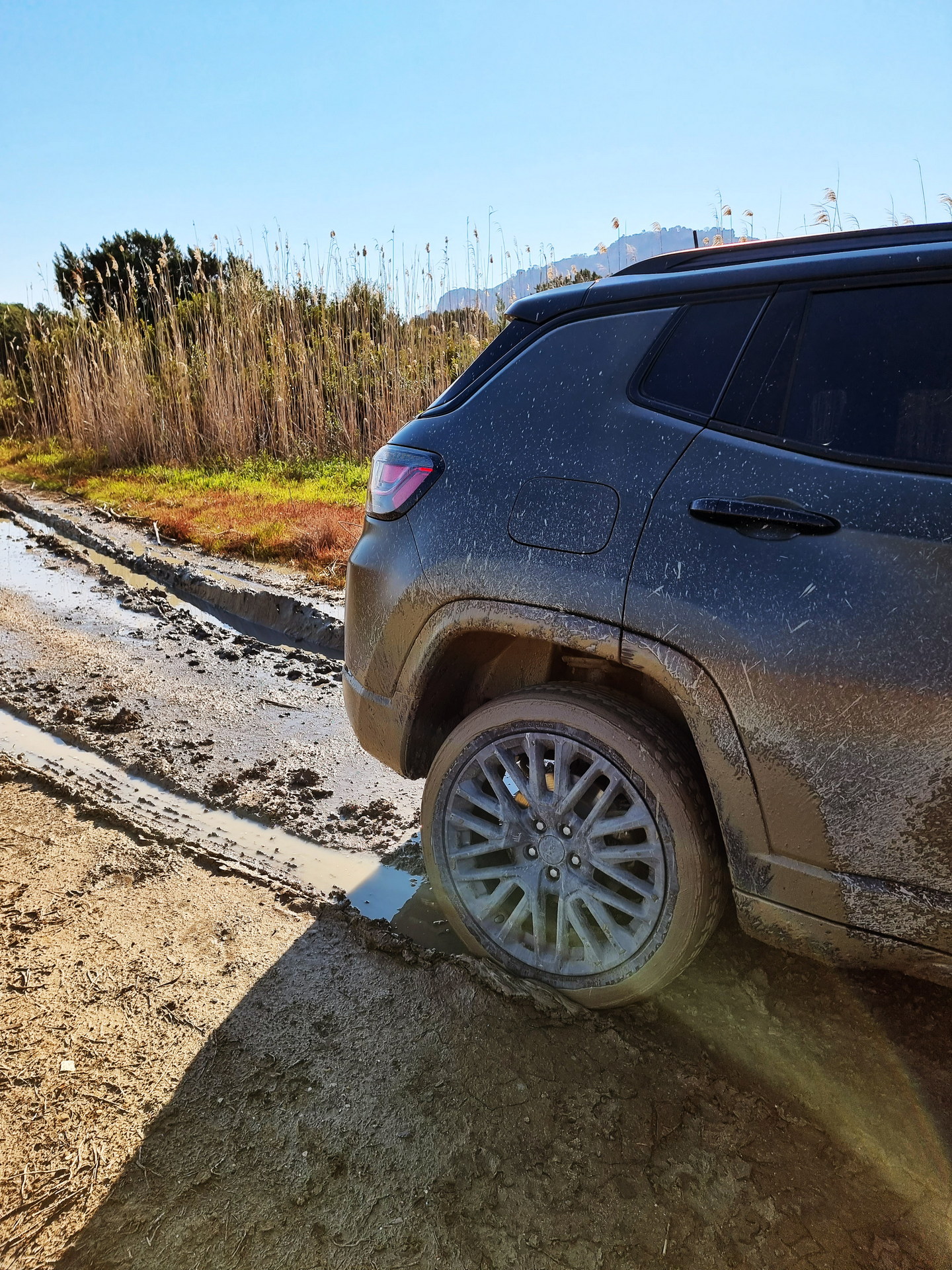
The new route had only one large portion of water separating me from the easily accessible field ahead. Unfortunately, it was more of quicksand hiding under a thin layer of water. I felt the car sinking and after some heavy wheel spinning, I was forced to stop and check the surroundings, trying to avoid digging myself deeper into the mud.
A large portion of the front right wheel and the front bumper were underwater and things looked pretty ugly. Before calling for help, I tried a little bit of reversing while turning the wheels to help the unfit tires find some traction. Five agonizing minutes later and against all odds, the Jeep had successfully gotten itself out of this mixture of water, sand, and clay, now safely parked on dry patches of grass and sand. The problem is that I was back in ground zero and didn’t want to try again what felt like a suicide mission for the car.
Avoiding Quicksand, Getting Stuck On The Sand
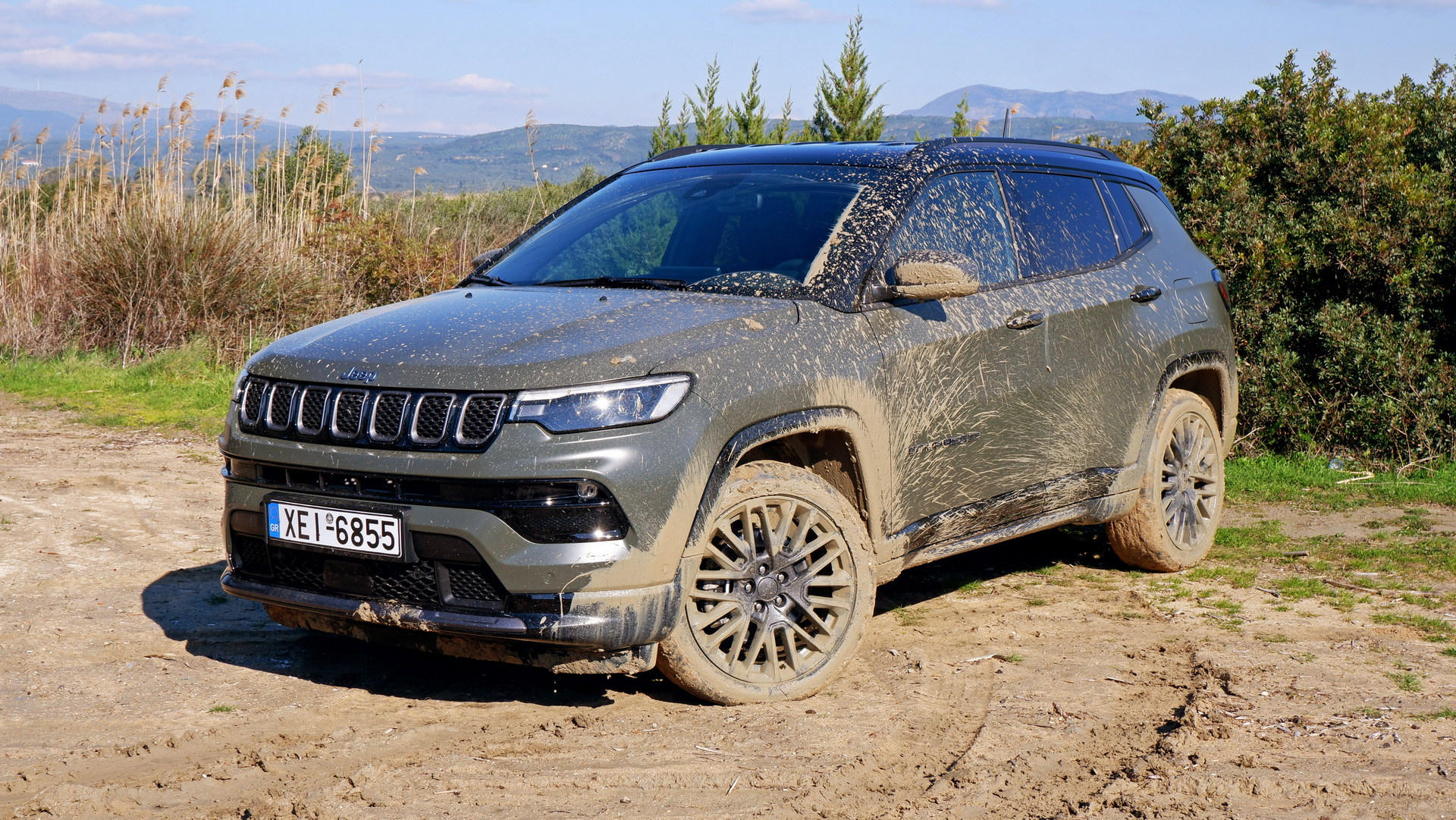
Under those circumstances and being happy I didn’t turn the Jeep into a modern remake of the Titanic, I found a way to go around the mud by taking a longer route from the beach. The Compass proved to be quite easy to handle in the sand, even when I needed to go uphill, with the 237 hp (177 kW / 240 PS) of combined power output doing their magic. Even though I would prefer a manual gearbox instead of the eight-speed automatic that is exclusively available in the PHEV, I was very satisfied with the way the electronic systems worked.
A few minutes later I was driving on the beach heading for the entrance. Unfortunately, my happiest moment is when I made my biggest mistake – I came to a full stop in order to check for any rocks ahead that could potentially damage the car. The sand may have looked totally dry but as I had reached closer to the seashore things were pretty wet underneath, showing that it had rained heavily beforehand. I got back in the car and tried easing my way forward but it didn’t work. The wheels started spinning and despite my best efforts with different setups they kept digging deeper into the sand.
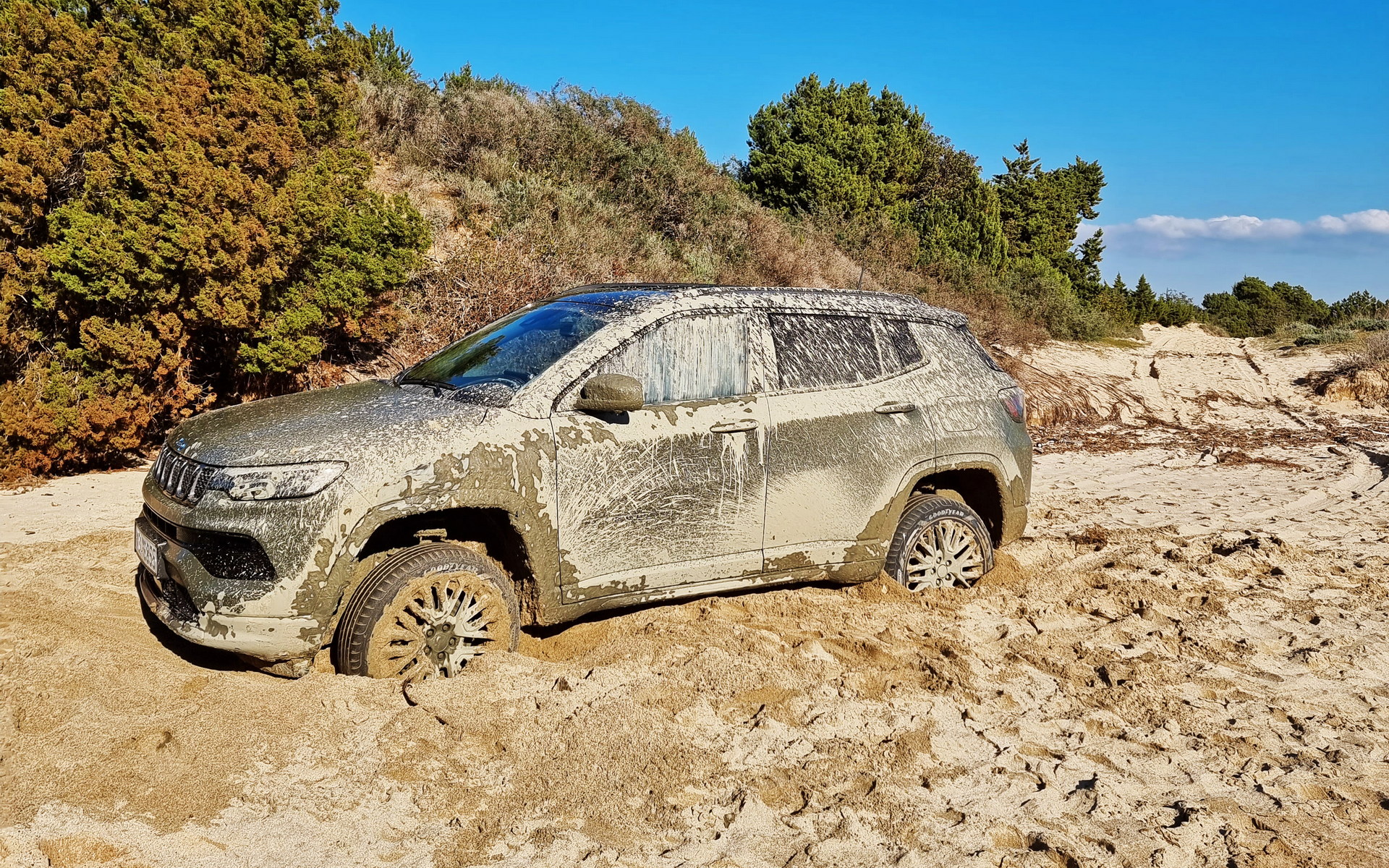
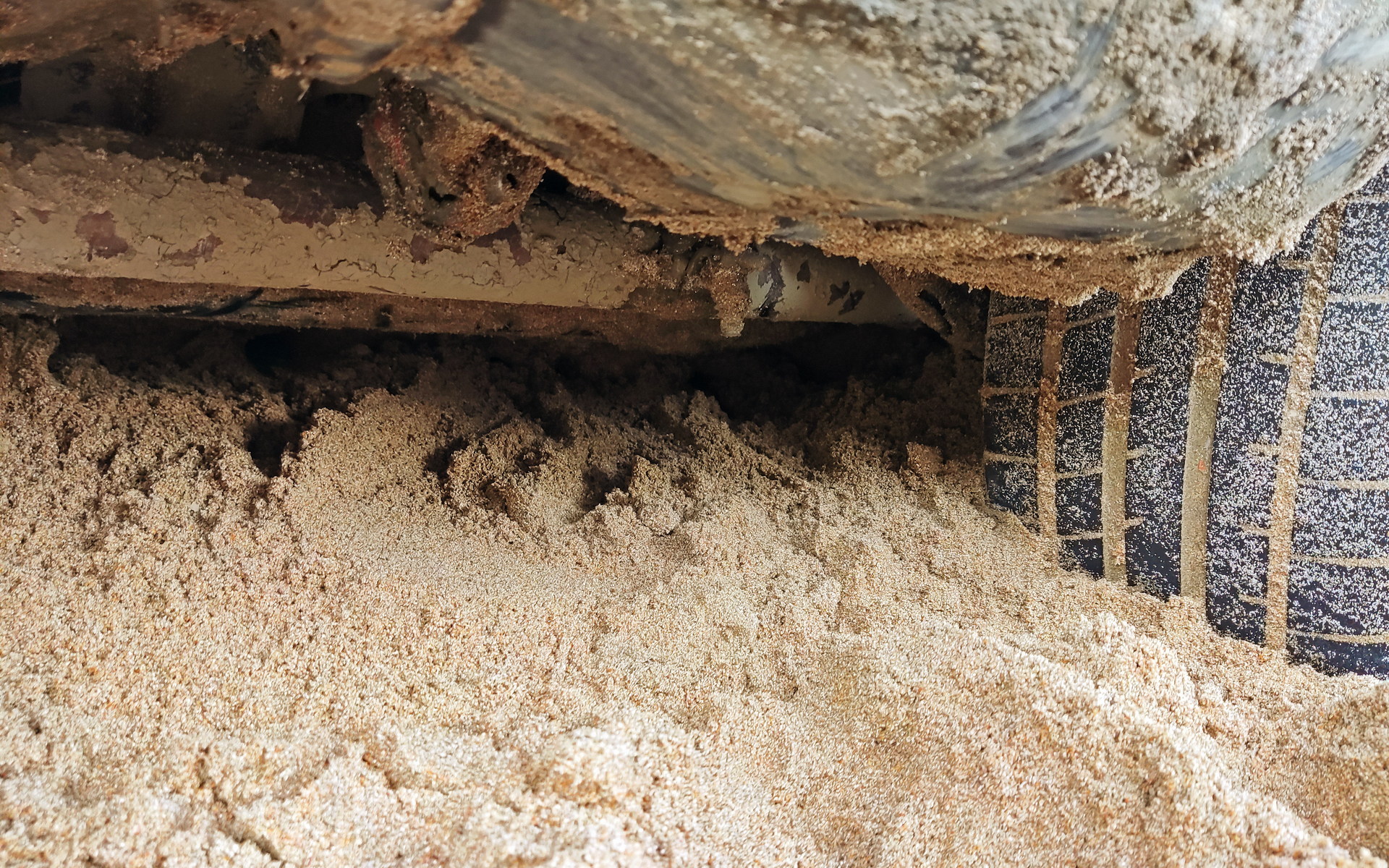
When I stepped out, I realized that the belly of the Compass was resting on the ground which made it really hard for the wheels to find traction. I started removing the sand with my bare hands, a process that would continue for 2-3 hours without any positive outcome. I realized there was so much moisture underground, with the increasing suspension travel showing me there was no use in digging deeper. I tried putting large rocks under the wheels but they couldn’t do much with the majority of the 1,860 kg (4,101 pounds) of the Compass 4Xe resting on the ground.
Admitting My Fault(s)
The fact that I was driving a press car means I could theoretically get free roadside assistance, although I wasn’t very optimistic given it was a Sunday afternoon in a remote place. After informing the very understanding local representative of Stellantis / Jeep, I called the number I found inside the glovebox to ask for help. Surprisingly, the lady on the phone informed me that they can’t send someone if there is no damage to the car or no accident involved. What I didn’t know at the time was that there was a different number for accidents and another one for roadside assistance and obviously I needed the latter more than the former.
Setting aside my stupidity, I contacted the local authorities to help me find someone that could tow me out. Two hours later I got a phone number and spoke with a guy with a tractor who was willing to help me. Being on the spot for too long and fearing that it would get dark soon, I accepted his crazy-expensive offer as the only viable option to get home safe with the Jeep. As I was waiting for him to cover the 10 km (6 miles) distance from the nearest village in his slow tractor, I thought of the challenges coming ahead.
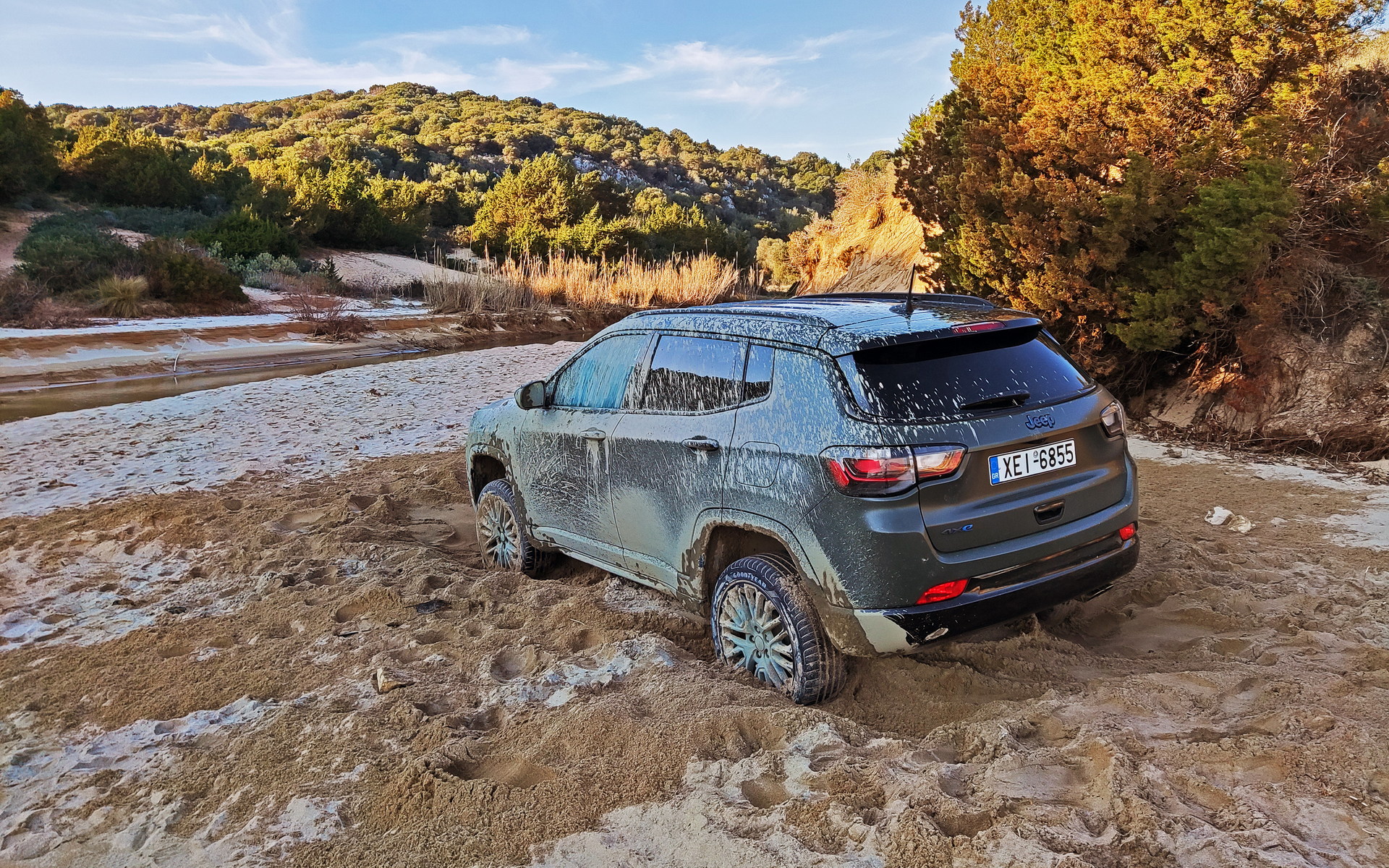
Thus, I prepared the car for towing by locating the recovery point under the small latch on the front bumper which was quite difficult to open with bare hands, and connecting the emergency towing hook that was stored under the cargo space area. Another piece of advice here – never leave the towing hook on the sand while you are digging; I almost lost it forever on that beach. I also dug a ramp in front of the car so the front bumper wouldn’t be damaged in the towing process.
At this point, I was really tired but happy with the result and optimistic about the rescue mission. That is when a local guy with his girlfriend arrived in an Isuzu D-Max pickup offering a helping hand. I warned them about the weird composure of the sand that day but he was confident he could make it on the beach. Despite wearing A/T tires and having a full-time AWD system, the pickup was also stuck in the sand a few meters away from my Jeep. Thankfully the higher ground clearance and the beefier tires helped it get out of this embarrassing situation although this made it clear that it wasn’t fit for towing another vehicle. The driver admitted that he had never seen the beach like that.
Rescuing The Jeep And A Near-Death Experience
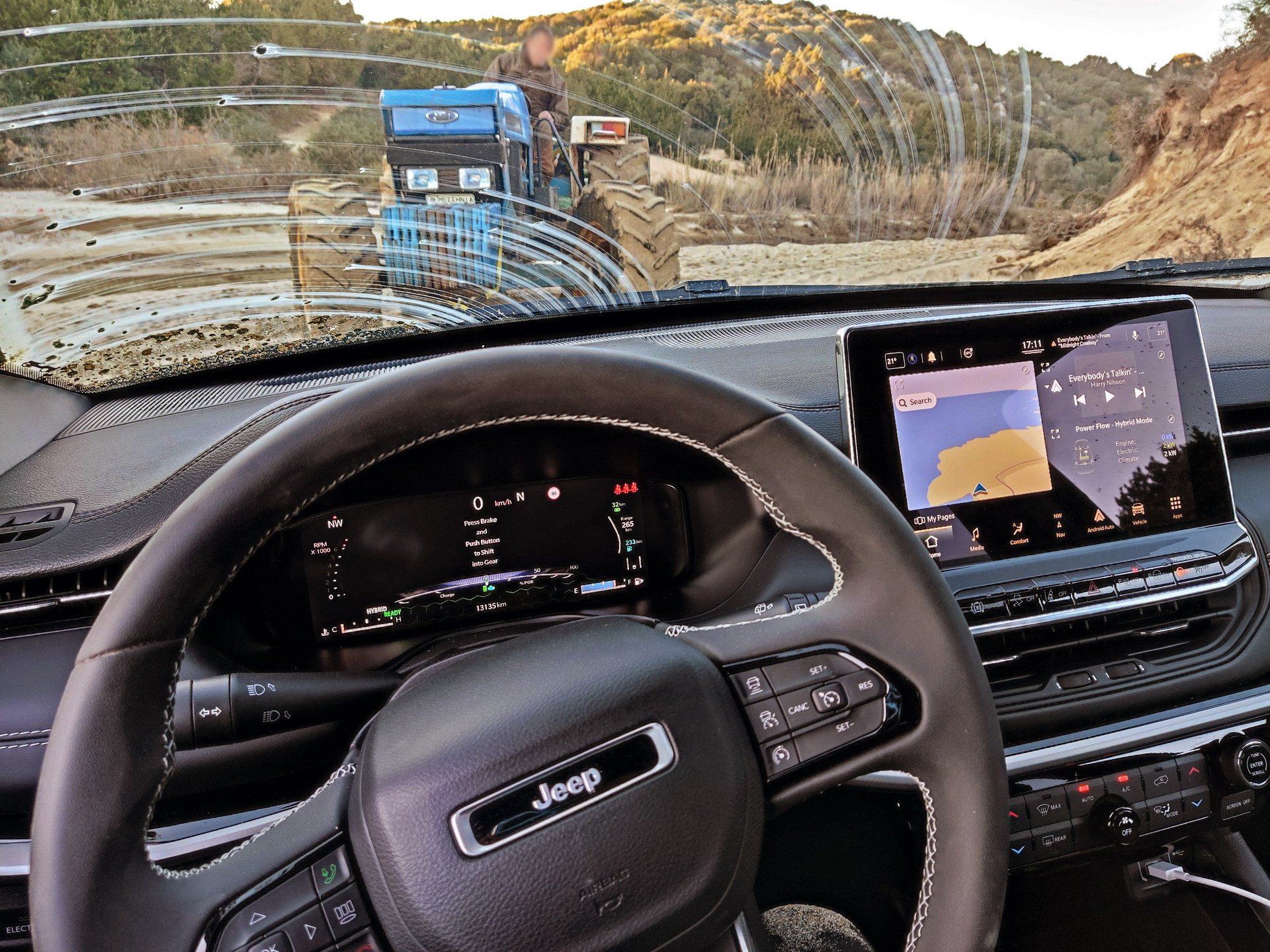
I was very happy when the tractor arrived with the proper towing belts. We didn’t lose any time and quickly strapped them on the emergency towing hook (by the way the Compass Trailhawk has fixed hooks). I put the automatic gearbox on neutral and the tractor started reversing. I could feel the force dragging me out of this hole but the nightmare wasn’t over.
The driver made a wrong call and one of the two massive rear wheels of the tractor ended up hanging in the air. Next to the beach entrance, there was a small river and he went dangerously close to the edge, almost falling over. Knowing that a rollover from such height on a cabin-less tractor would be deadly for the driver, I got really scared. However, at the very last minute, he somehow saved it and got the tractor back on safe ground.
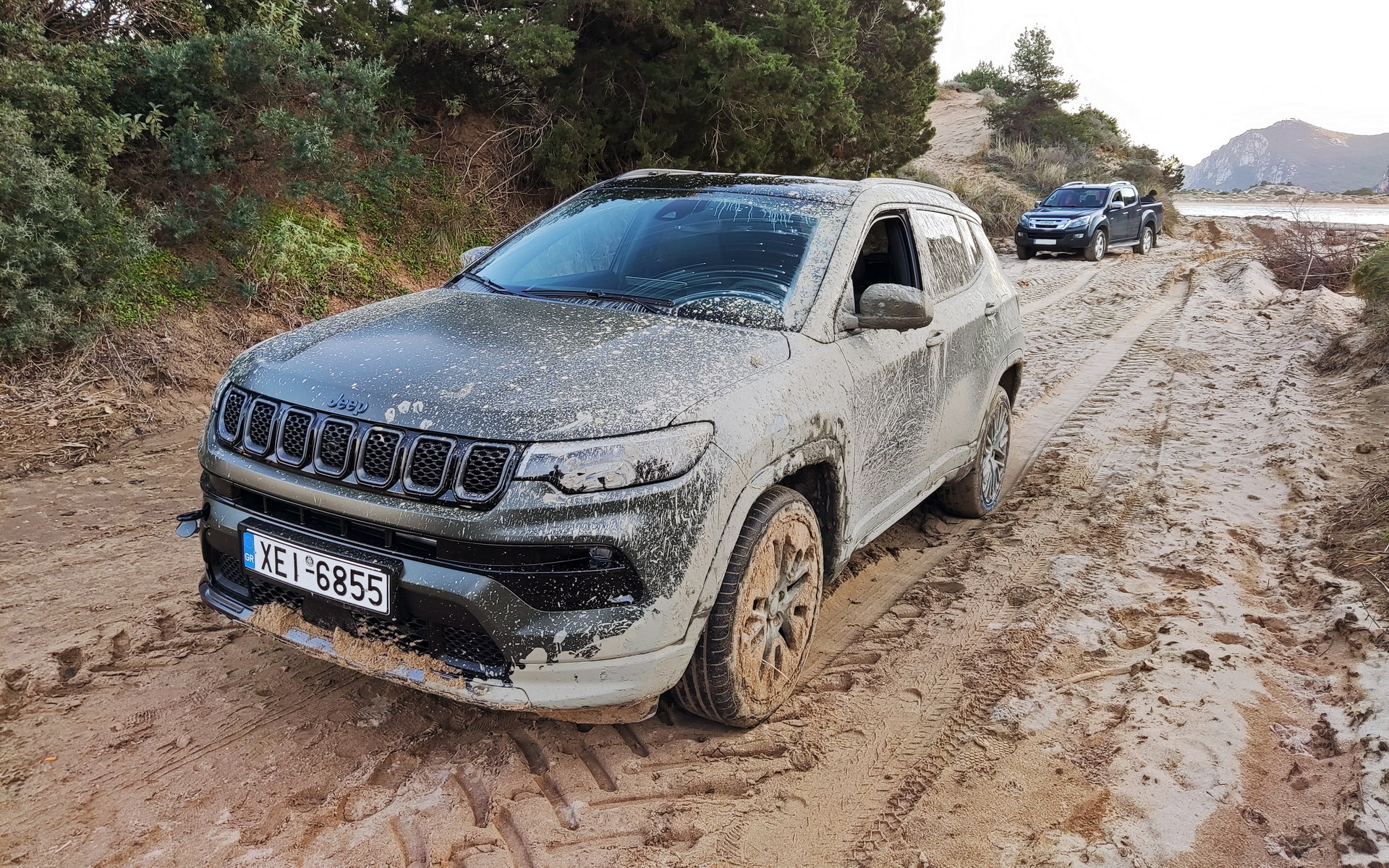
A few minutes later I was parked in the same open space from where my adventure began. I was tired but happy everything turned out well without any injuries or any damage to the car. The only thing I needed to do was to take the – now dried – mud off the Jeep so I could protect its mechanical components and the paint of the 80th Anniversary edition. I eased my way into the nearest gas station with a car wash.
Thankfully they agreed to wash the mud-covered Jeep when I offered to pay extra because of my late Sunday afternoon visit and the state of the SUV. Large patches of mud were falling off the Jeep, with the pressure washer cleaning its axle, suspension, brakes, and plastic skirts. This would cost me four times a regular wash but again I had no alternative since it wouldn’t be safe to drive the vehicle without being able to see outside the windows. With a clean Compass but some fair amount of sand in my clothes, I headed back home which was a three-hour drive.
How To Avoid My Mistake
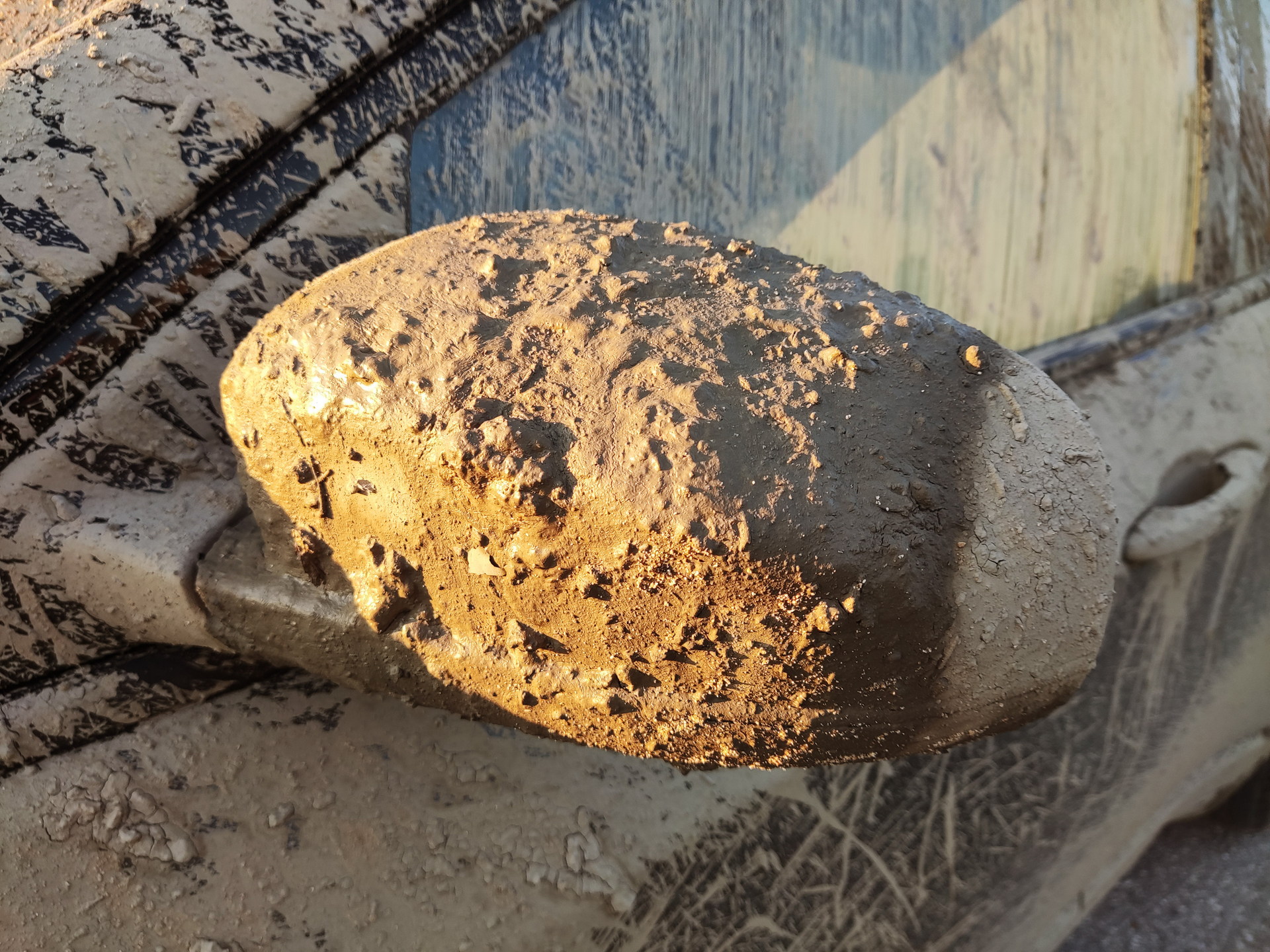
What I learned from this experience can be summed up in a few words. First of all, do not take any off-roading risks when you are alone in a remote place. I could just continue my daytrip schedule and find easier spots for photography without getting wet. Second, always check the weather and the condition of the surface you are driving on. If I knew that it was record levels of rain a day earlier or if I had checked the mud/sand with a stick before driving into the quicksand, it would definitely be a safer bet. Third, never overestimate the abilities of your vehicle when you don’t have much experience with it in similar environments, and never underestimate the effect of a wrong set of tires. The latter can be more important than the vehicle or powertrain type, and should always be taken into account. Lastly, never trust locals that can rip you off when you are in desperate need of their help.
Reading this experience I am sure that some people will blame the car, thinking that it is a softcore SUV not comparable with “real” Jeeps like the Wrangler. To those, I must say that like all modern C-SUVs, the Compass has to satisfy the needs of its target group that is focused on technology, efficiency, handling, safety, and practicality. The 4Xe variant does all of that in a decent manner, while being the best option in the segment for light off-roading, especially in the Trailhawk trim with grippy tires, underbody protection, and an adventure-suited bodykit. Still, it doesn’t compare with ladder-frame off-roaders like the Suzuki Jimny, the Ford Bronco, or the Toyota Land Cruiser, but neither of those is considered a rival. To sum up, the Compass 4Xe might be the most “Jeep” among C-SUVs but it is also limited to some extent by the characteristics of the segment, its tire setup… and its driver.



